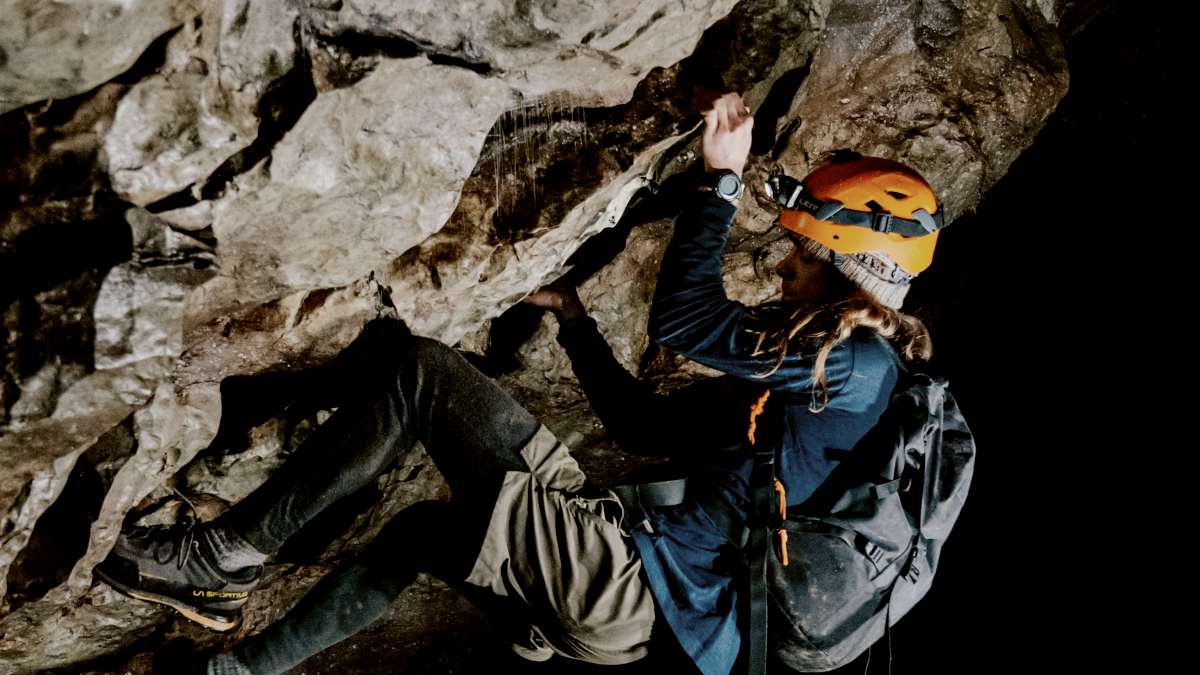
1 Surprising Hobby That Might Be The Ultimate Flow State Trigger
Caving might seem extreme, but its mental benefits are deeply human. Here's how it can create clarity, focus, and a powerful sense of now.

By Mark Travers, Ph.D. | May 26, 2025
Most of us have heard of the concept of a flow state. Generally, we think of it as a side effect of doing something we love. But what if it's the other way around? How much of what we choose to do is actually driven by the desire to enter a state of flow?
In 2009, John Edward Jones became trapped in Utah's Nutty Putty Cave. Wedged headfirst in a narrow crevice 400 feet under the ground, rescuers spent over 24 hours trying to free him. But their efforts failed. He died where he was stuck, and the cave was permanently sealed with concrete, his body entombed inside.
Jones had been caving since he was 4 years old. For those like him, caving, or spelunking, the exploration of tight, pitch-black, often waterlogged underground passageways is a calling that seems to blur the line between physical endurance and psychological need.
But not every caving expedition is a death-defying mission, and Jones's case is an exception, not a rule. In fact, much of the modern caving community is organized and operates within a tightly regulated framework.
Serious cavers train extensively, use specialized equipment and often descend in teams with established safety protocols. Many routes are mapped and well-studied, and some caves are even developed as tourist attractions with guided tours and fixed lighting.
Still, there's a crucial difference between recreational caving and the kind of high-commitment, demanding exploration pursued by dedicated cavers like Jones.
Are You More Likely To Achieve A Flow State As A Cave Tourist Or A Cave Explorer?
The difference between travel and tourism is subtle, but we all feel it. One implies curiosity, challenge and even transformation. The other suggests comfort, itineraries and souvenirs. That contrast holds underground too.
There's a stark divide between casual cave tourism and serious cave exploration. Tourists might walk through lit pathways in show caves with a guide and a handrail. But true explorers — often called speleologists — operate on the fringe of tourism altogether. They seek out raw, technically demanding environments where routes are sometimes unmarked, conditions unpredictable and the experience both physically and mentally consuming.
A December 2024 paper on the Polish caving community draws this line clearly. It found that the people who take on cave challenges outside of mass tourism aren't necessarily in it to tick a box. Their motivations are internal: a mix of aesthetic wonder, cognitive curiosity, emotional intensity and a search for the unknown.
While many adventure sports are framed around showmanship or risk — think downhill mountain biking or skydiving — dedicated caving is not loud or aesthetic. If anything, it's a grueling ordeal that forces you to contort your body so it passes through gaps human bodies were never designed to pass through. The dark environment also makes it a private pursuit shaped by solitude, silence and a kind of intimacy with the Earth.
Interestingly, the paper suggests that while tourists in popular caves are often motivated by escape, novelty or social connection, serious cavers are more likely to chase a flow state, where even time can stand still.
The Appeal Of The Flow State, Particularly While Caving
One of the biggest reasons caving scares people off is claustrophobia. Imagine being required to squeeze through rock passages with barely enough space to breathe, let alone move. It triggers a kind of primal panic. It isn't fear in the classic sense, but a rising anxiety.
But for the few who fall in love with the pastime, this discomfort eventually gives way to something else: total focus.
Psychologists call it a flow state, a mental zone where you're fully immersed in what you're doing. Time warps, self-awareness fades and every movement becomes instinctive yet deliberate, shaped by the cave itself.
The Flow State And Its Appeal To Cavers Leaves Us With One Takeaway
For someone who can't imagine finding pleasure in putting themselves in perilous situations just to achieve a state of flow, caving can seem unnecessary. The risk appears wildly out of sync with the reward. But many cavers are actively involved in cave-conservation efforts, mapping uncharted cave systems or studying underground geology and biology. Whatever the reward is, it's rarely external.
Interestingly, research suggests that individuals who are more prone to experiencing flow states may also see greater health benefits, including reduced risk of cardiovascular disease.
It's also worth noting that for most of us, achieving a flow state while wedged between rocks isn't exactly likely. This is because what puts each of us in a flow state varies by individual. It also varies by skill level.
Here's one way to think about it in the context of a much more common hobby — running. Nearly 15% of the U.S. population runs, but not everyone experiences a state of flow doing it.
When your skills are still in the state of development, flow will feel harder to achieve. Once skill becomes muscle memory, it unlocks a new level of appreciation for the sport. That's why experienced runners are more likely to associate running with flow than beginners.
So, flow is unlocked at the intersection of skill, challenge and intrinsic motivation. And that's the takeaway.
Caving is ultimately about what happens to the mind and body when the noise of the outside world disappears. Most of us won't find a flow state deep inside a cave, but we're all looking for it somewhere. And when we do find it, whether on a trail, behind a camera or deep in a project that drives us, we begin to understand why someone might risk everything just to feel that focused, wordless clarity over and over.
Some people achieve a flow state by pushing past fear, embracing silence and finding meaning in the unknown. Take the science-backed Openness To Experience Scale to find out where you stand.
A similar version of this article can also be found on Forbes.com, here.
